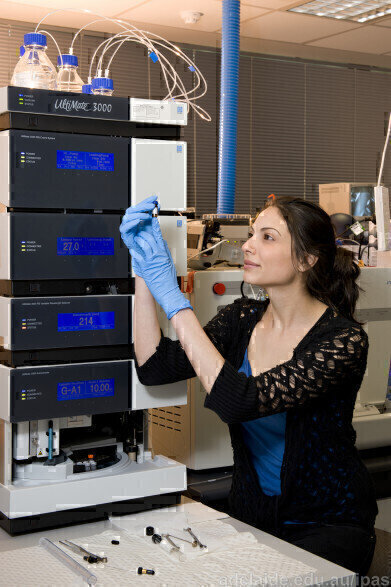HPLC, UHPLC
How to Speed up Your HPLC System
Sep 08 2014
The ability to speed up a high performance liquid chromatography (HPLC) run has obvious benefits by reducing analysis time and therefore costs.
It is important to have an efficient column, as this will produce a good separation of the sample components in the chromatogram; in other words, acceptable peak separations. Peak resolution has to be considered if changes are made to the HPLC system to speed up the analysis of multiple samples— fast, inefficient analysis defeats the object of increased throughput if the chromatography runs have to be repeated.
Column length and efficiency
One of the simplest ways of speeding up an HPLC system is to reduce the column length. This has the effect of reducing the run time — and so the throughput of the system is increased.
If the column length is reduced, the number of theoretical plates in the column will be correspondingly reduced and therefore the resolution of the HPLC system. The question raised is if the column length is shortened to increase throughput, how can the resolution of the column be maintained?
The resolution of a column is measured by its efficiency — and the more efficient a column is the better the resolution. Column efficiency is:
- proportional to column length; a longer column is more efficient
- inversely proportional to the stationary phase particle size
If the column length is reduced to increase the speed of analysis and the resolution becomes too low, the stationary phase particle size will have to be reduced to increase efficiency and resolution back to acceptable levels.
Smaller particles
Reducing particle size to increase efficiency also has an effect on the backpressure in the column because the pressure is inversely proportional to the square of the particle size. If the pressure increases too much, standard HPLC instruments might not be capable of handling the pressure changes.
Mobile phase flow rates
Another technique to speed up HPLC analysis is to increase the mobile phase flow rate. A faster flow rate through the column will produce a faster analysis time.
The relationship between flow rate and column efficiency can be plotted on a Van Deemter plot which can be used to determine the optimum mobile phase flow rate. Using standard silica HPLC columns, it can be shown that as the flow rate increases, column efficiency decreases.
Fused core particles
The problem of increased system pressure can be addressed by using fused-core particles in the column in place of standard silica. Fused core particles have a solid core surrounded by a porous outer shell. They have similar Van Deemter plots to very small silica particles.
Small fused core particles have the same advantages of small particles by increasing column efficiency, which means that shorter columns and higher flow rates can be used. They also reduce the system pressures associated with standard silica small particles.
The use of fused core particles is discussed in: UHPLC or Core-Shell, Which is the Winner?
Image Source
Digital Edition
Chromatography Today - Buyers' Guide 2022
October 2023
In This Edition Modern & Practical Applications - Accelerating ADC Development with Mass Spectrometry - Implementing High-Resolution Ion Mobility into Peptide Mapping Workflows Chromatogr...
View all digital editions
Events
Apr 28 2024 Montreal, Quebec, Canada
May 05 2024 Seville, Spain
May 15 2024 Birmingham, UK
May 19 2024 Brno, Czech Republic
May 21 2024 Lagos, Nigeria














